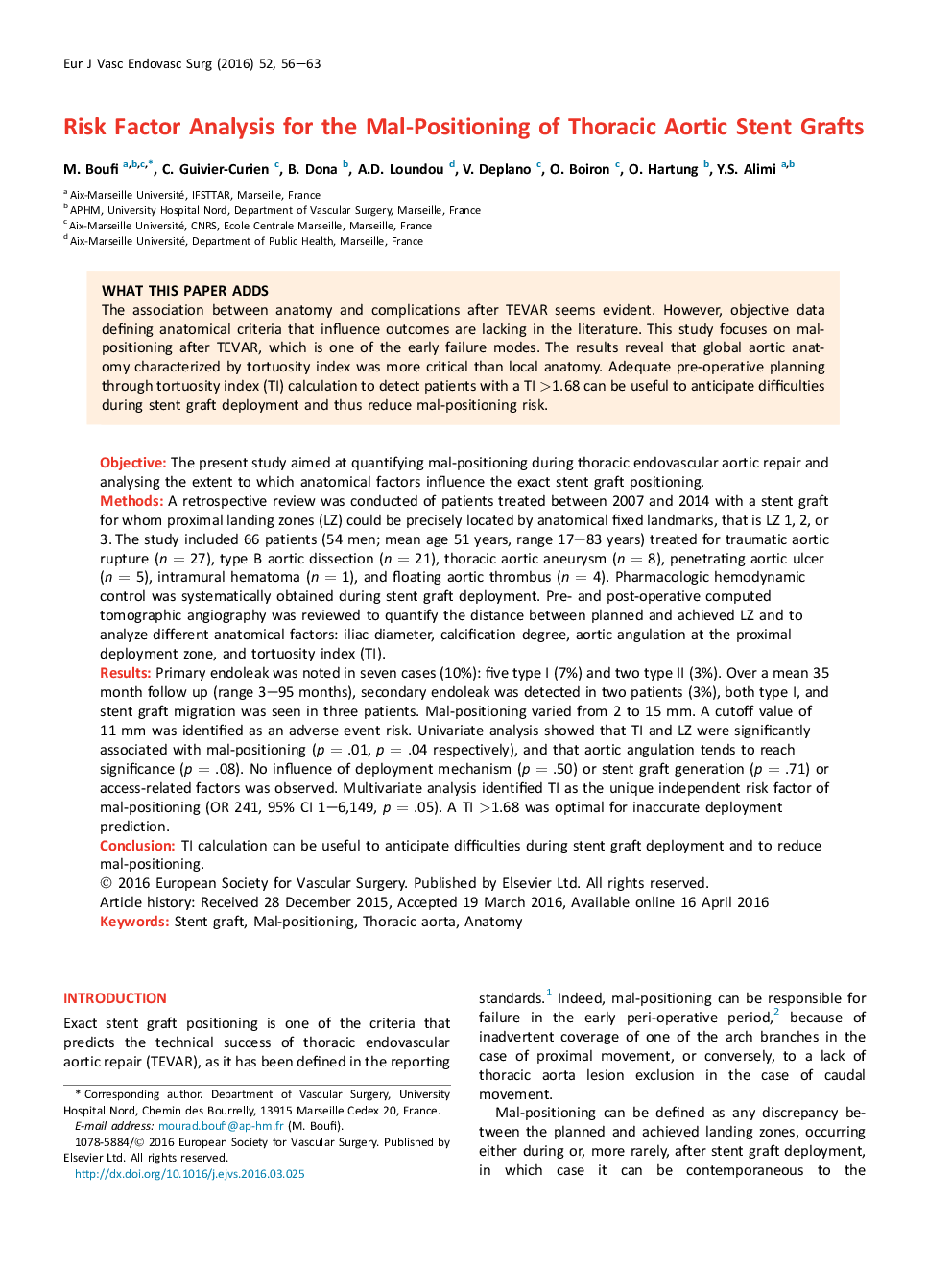| Article ID | Journal | Published Year | Pages | File Type |
|---|---|---|---|---|
| 2911644 | European Journal of Vascular and Endovascular Surgery | 2016 | 8 Pages |
ObjectiveThe present study aimed at quantifying mal-positioning during thoracic endovascular aortic repair and analysing the extent to which anatomical factors influence the exact stent graft positioning.MethodsA retrospective review was conducted of patients treated between 2007 and 2014 with a stent graft for whom proximal landing zones (LZ) could be precisely located by anatomical fixed landmarks, that is LZ 1, 2, or 3. The study included 66 patients (54 men; mean age 51 years, range 17–83 years) treated for traumatic aortic rupture (n = 27), type B aortic dissection (n = 21), thoracic aortic aneurysm (n = 8), penetrating aortic ulcer (n = 5), intramural hematoma (n = 1), and floating aortic thrombus (n = 4). Pharmacologic hemodynamic control was systematically obtained during stent graft deployment. Pre- and post-operative computed tomographic angiography was reviewed to quantify the distance between planned and achieved LZ and to analyze different anatomical factors: iliac diameter, calcification degree, aortic angulation at the proximal deployment zone, and tortuosity index (TI).ResultsPrimary endoleak was noted in seven cases (10%): five type I (7%) and two type II (3%). Over a mean 35 month follow up (range 3–95 months), secondary endoleak was detected in two patients (3%), both type I, and stent graft migration was seen in three patients. Mal-positioning varied from 2 to 15 mm. A cutoff value of 11 mm was identified as an adverse event risk. Univariate analysis showed that TI and LZ were significantly associated with mal-positioning (p = .01, p = .04 respectively), and that aortic angulation tends to reach significance (p = .08). No influence of deployment mechanism (p = .50) or stent graft generation (p = .71) or access-related factors was observed. Multivariate analysis identified TI as the unique independent risk factor of mal-positioning (OR 241, 95% CI 1–6,149, p = .05). A TI >1.68 was optimal for inaccurate deployment prediction.ConclusionTI calculation can be useful to anticipate difficulties during stent graft deployment and to reduce mal-positioning.
